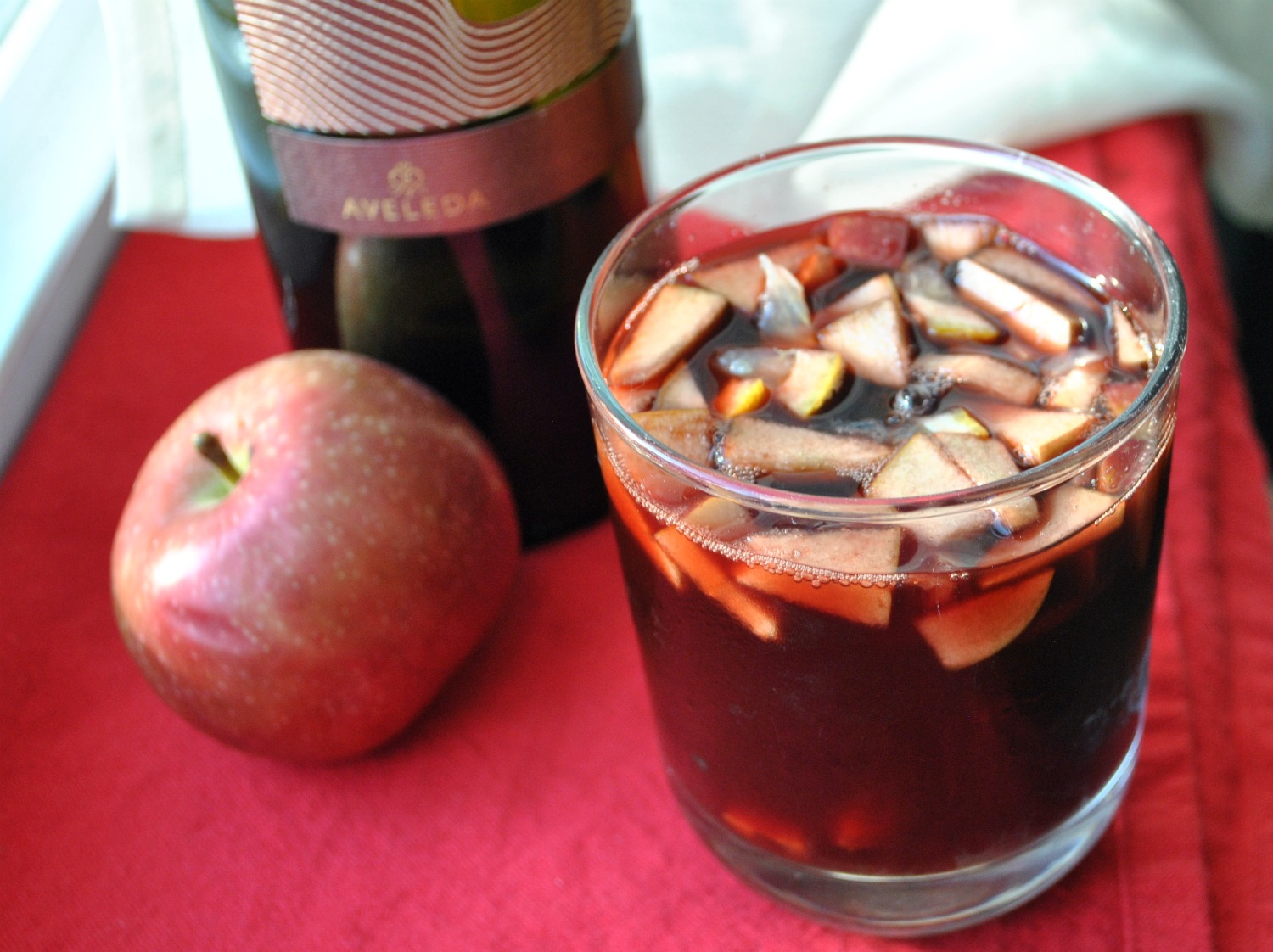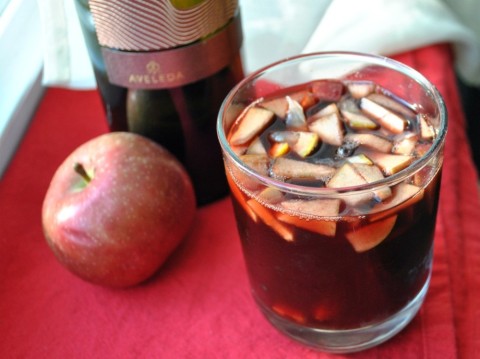
I’ve always thought of sangria as a summer thing. Which, in most places, it is. But when I think about the fruit I usually see floating in my sangria—apples, oranges, lemons—it seems much more appropriate for fall. In truth, I think you can make it all year round. It can be cool and refreshing or sweet-tart with the warm, slow burn of brandy. Either way, people love it (sometimes a little too much), and it’s a great way to use up not-so-great bottles of wine.
In the summer, you can make it with peaches, plums, grapes or watermelon. In the late spring you can use strawberries and cherries. And in the autumn and winter months, apples, pears, oranges, and grapefruit are wonderful. No matter what the season, you always need a little lemon for tartness and tang.
There’s no real “recipe” for our sangria. Really, Tony is the one who makes it; I just help cut the fruit and taste test (It’s a rough life, I know!). Here’s Tony on his amazing sangria technique:
At its heart, sangria is about using cheap wine and seasonal fruit to make a delicious beverage, adding a couple more ingredients to tie everything together. It’s those final two things that really change it from wine and fruit into sangria: brandy and sugar.
Because I’m a purist, I restrict my sangria to these basics. I think it tastes better with these few ingredients than with other liquors, juices, and sparkling sodas. There’s no need to buy expensive wine or expensive brandy. When buying cheap wine, stay away from the more fruity varieties (merlot, zinfandel, syrah) and anything that’s been aged a long time in oak. Buy the cheapest brandy you can find (just be sure it’s not flavored!).
- 2 bottles (750 ml) dry, un-oaked red or white wine
- 1 bottle (750ml) of brandy
- 2-3 cups diced seasonal fruit
- 1 small lemon, cut into small dice
- 2 tablespoons granulated sugar
- 1 cup of simple syrup (you may not use it all, but have it on hand)
- It’s best to start the night before (though it can be made the morning of, as well). Combine the fruit and lemon with enough brandy to cover it (you probably won’t need the whole bottle). Add the granulated sugar, mix it all together, then cover and refrigerate for at least four hours or overnight. Also refrigerate the bottles of wine.
- Assemble the sangria shortly before you serve it. When you’re ready, mix the chilled wine with the fruit and add some simple syrup. There are no exact amounts: I start with a little simple syrup and progressively add more until the flavors comes together.
- I hate to say that you’ll know it when you taste it, but you really will. It’s the point at which it stops tasting like cold wine and starts tasting like sangria. It shouldn’t be overly sweet, rather just sweet enough to pull the fruit and wine together.
- Serve chilled over ice. Make sure each glass gets a good serving of fruit!

very interesting! I’ve always enjoyed how refreshing it is, but never added brandy; I had no idea! Maybe w/o brandy in summer and w/ brandy in winter for that extra warmth 🙂 thx!!
I know this is way after the fact, but I had the opportunity to host a women’s night in/ sangria sampling party. I was very intrigued by my favorite summer indulgence coming with me into the fall. To have a proper test, I used the same wines and brandies. Although enjoyable, the overall nod went to the tried and true summer recipe I traditionally use. I do love seeing your cocktail recipes, and must tell you the watermelon gin punch became a staple at grill outs this year.
Made this for my company appreciation party and it was a HUGE success!